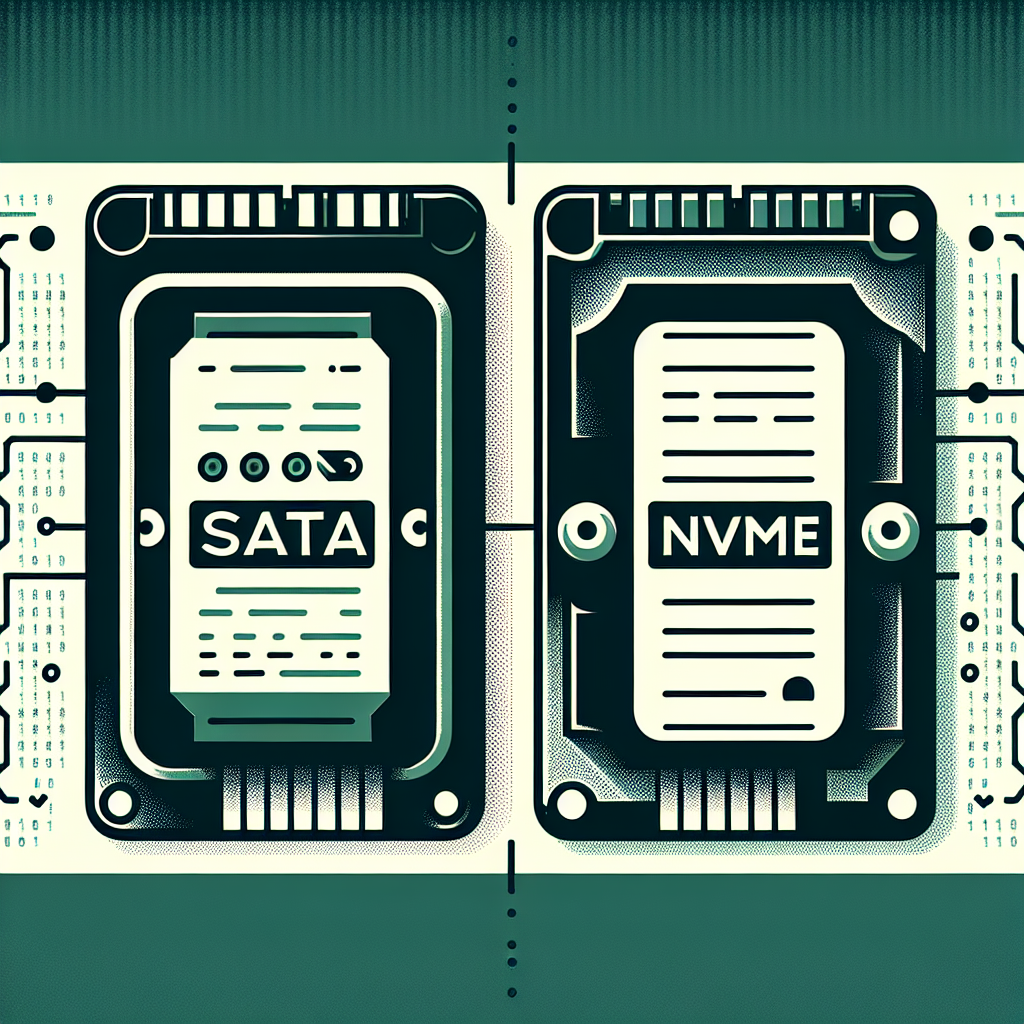Your cart is currently empty!
SATA vs. NVMe: Which SSD is Right for You?

Solid-state drives (SSDs) have become the go-to choice for storage in modern computers due to their faster speeds and improved reliability compared to traditional hard drives. However, when it comes to SSDs, there are two main types to consider: Serial ATA (SATA) and Non-Volatile Memory Express (NVMe). So, which one is right for you?
SATA SSDs have been around for quite some time and are the more common option on the market. They are typically cheaper and more widely available than NVMe SSDs. SATA SSDs connect to your motherboard via a SATA cable and are limited by the SATA interface’s maximum speed of around 600 MB/s. While this is still significantly faster than a traditional hard drive, it pales in comparison to the speeds offered by NVMe SSDs.
NVMe SSDs, on the other hand, utilize the PCIe interface to achieve much faster read and write speeds. NVMe SSDs can reach speeds of up to 3,500 MB/s, making them ideal for tasks that require high-speed data transfer, such as gaming, video editing, and other demanding applications. However, NVMe SSDs are typically more expensive than SATA SSDs and may not be necessary for the average user.
When deciding between SATA and NVMe SSDs, it ultimately comes down to what you will be using your computer for. If you are a casual user who simply needs a faster boot time and improved overall performance, a SATA SSD will likely be more than sufficient for your needs. On the other hand, if you are a power user who regularly works with large files or plays demanding games, you may benefit from the faster speeds offered by an NVMe SSD.
It’s also worth noting that some motherboards may not support NVMe SSDs, so be sure to check compatibility before making a purchase. Additionally, if you are on a budget, SATA SSDs may be the more cost-effective option.
In conclusion, both SATA and NVMe SSDs have their own advantages and disadvantages. SATA SSDs are more affordable and widely available, while NVMe SSDs offer significantly faster speeds for more demanding tasks. Ultimately, the choice between the two will depend on your specific needs and budget.

Leave a Reply